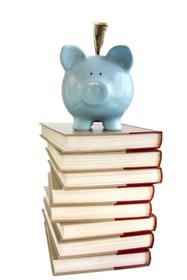For the 2025-26 school year, there are 9 public schools serving 3,077 students in Bibb County School District. This district's average testing ranking is 3/10, which is in the bottom 50% of public schools in Alabama.
Public Schools in Bibb County School District have an average math proficiency score of 21% (versus the Alabama public school average of 30%), and reading proficiency score of 37% (versus the 47% statewide average).
Minority enrollment is 32% of the student body (majority Black), which is less than the Alabama public school average of 49% (majority Black).
Overview
This School District
This State (AL)
# Schools
9 Schools
1,517 Schools
# Students
3,077 Students
743,516 Students
# Teachers
179 Teachers
42,637 Teachers
Student-Teacher Ratio
17:1
17:1
Student By Grade
District Rank
Bibb County School District, which is ranked within the bottom 50% of all 145 school districts in Alabama (based off of combined math and reading proficiency testing data) for the 2022-2023 school year.
The school district's graduation rate of 89% has increased from 88% over five school years.
Overall District Rank
#106 out of 145 school districts
(Bottom 50%)
(Bottom 50%)
Math Test Scores (% Proficient)
21%
30%
Reading/Language Arts Test Scores (% Proficient)
36%
47%
Science Test Scores (% Proficient)
26%
38%
Graduation Rate
89%
88%
Students by Ethnicity:
Diversity Score
0.49
0.63
% American Indian
n/a
1%
% Asian
n/a
1%
% Hispanic
7%
11%
% Black
22%
32%
% White
68%
51%
% Hawaiian
n/a
n/a
% Two or more races
3%
4%
All Ethnic Groups
District Revenue and Spending
The revenue/student of $12,538 in this school district is less than the state median of $13,006. The school district revenue/student has stayed relatively flat over four school years.
The school district's spending/student of $12,879 is higher than the state median of $12,220. The school district spending/student has stayed relatively flat over four school years.
Total Revenue
$39 MM
$9,671 MM
Spending
$40 MM
$9,086 MM
Revenue / Student
$12,538
$13,006
Spending / Student
$12,879
$12,220
Best Bibb County School District Public Schools (2025-26)
School
(Math and Reading Proficiency)
(Math and Reading Proficiency)
Location
Quick Facts
Rank: #11.
Woodstock Elementary School
(Math: 45-49% | Reading: 65-69%)
Rank:
Rank:
9/
Top 20%10
19456 Eastern Valley Rd
Woodstock, AL 35188
(205) 938-2028
Woodstock, AL 35188
(205) 938-2028
Gr: PK-4 | 288 students Student-teacher ratio: 17:1 Minority enrollment: 18%
Rank: #22.
West Blocton Elementary School
(Math: 35-39% | Reading: 60-64%)
Rank:
Rank:
8/
Top 30%10
828 Cahaba River Dr
West Blocton, AL 35184
(205) 938-9005
West Blocton, AL 35184
(205) 938-9005
Gr: PK-4 | 297 students Student-teacher ratio: 17:1 Minority enrollment: 18%
Rank: #33.
Randolph Elementary School
(Math: 20-24% | Reading: 40-44%)
Rank:
Rank:
5/
Bottom 50%10
7259 Highway 36
Randolph, AL 36792
(334) 366-2897
Randolph, AL 36792
(334) 366-2897
Gr: PK-6 | 242 students Student-teacher ratio: 19:1 Minority enrollment: 25%
Rank: #44.
West Blocton Middle School
(Math: 19% | Reading: 42%)
Rank:
Rank:
5/
Bottom 50%10
4721 Truman Aldrich Pkwy
West Blocton, AL 35184
(205) 938-2451
West Blocton, AL 35184
(205) 938-2451
Gr: 5-8 | 382 students Student-teacher ratio: 18:1 Minority enrollment: 18%
Rank: #55.
Brent Elementary School
(Math: 21% | Reading: 37%)
Rank:
Rank:
4/
Bottom 50%10
160 4th Street
Brent, AL 35034
(205) 926-4993
Brent, AL 35034
(205) 926-4993
Gr: PK-4 | 591 students Student-teacher ratio: 16:1 Minority enrollment: 45%
Rank: #66.
West Blocton High School
(Math: 20-24% | Reading: 20-24%)
Rank:
Rank:
4/
Bottom 50%10
4734 Truman Aldrich Parkway
West Blocton, AL 35184
(205) 938-9002
West Blocton, AL 35184
(205) 938-9002
Gr: 9-12 | 395 students Student-teacher ratio: 16:1 Minority enrollment: 17%
Rank: #77.
Bibb County High School
(Math: 15-19% | Reading: 20-24%)
Rank:
Rank:
3/
Bottom 50%10
220 Birmingham Rd
Centreville, AL 35042
(205) 926-9071
Centreville, AL 35042
(205) 926-9071
Gr: 9-12 | 453 students Student-teacher ratio: 17:1 Minority enrollment: 47%
Rank: #88.
Centreville Middle School
(Math: 13% | Reading: 26%)
Rank:
Rank:
3/
Bottom 50%10
1621 Montgomery Hwy
Centreville, AL 35042
(205) 926-9861
Centreville, AL 35042
(205) 926-9861
Gr: 5-8 | 429 students Student-teacher ratio: 19:1 Minority enrollment: 45%
Rank: n/an/a
Bibb County Career Academy
Vocational School
17191 Highway 5
West Blocton, AL 35184
(205) 938-7434
West Blocton, AL 35184
(205) 938-7434
Gr: 9-12
Frequently Asked Questions
How many schools belong to Bibb County School District?
Bibb County School District manages 9 public schools serving 3,077 students.
What is the rank of Bibb County School District?
Bibb County School District is ranked #105 out of 145 school districts in Alabama (bottom 50%) based off of combined math and reading proficiency testing data for the 2022-2023 school year.
What is the racial composition of students in Bibb County School District?
68% of Bibb County School District students are White, 22% of students are Black, 7% of students are Hispanic, and 3% of students are Two or more races.
What is the student/teacher ratio of Bibb County School District?
Bibb County School District has a student/teacher ratio of 17:1, which is equal to the Alabama state average of 17:1.
What is Bibb County School District's spending/student ratio?
The school district's spending/student of $12,879 is higher than the state median of $12,220. The school district spending/student has stayed relatively flat over four school years.
Recent Articles

How Public Schools Support Students on Free / Reduced-Lunch Programs
Explore how U.S. public schools support students eligible for free or reduced-price lunch through nutrition, academic, and wraparound services in 2025.

Hidden Costs of Public Schools: Fees, Supplies & Extras
Explore the hidden costs in public schools鈥攆ees, supplies, extracurriculars鈥攁nd how parents can plan for them in 2025.

Public School Funding 2025: What Families Should Know
Essential insights on public school funding in 2025鈥攈ow it works, what鈥檚 changing, and what families should know to stay ahead.





